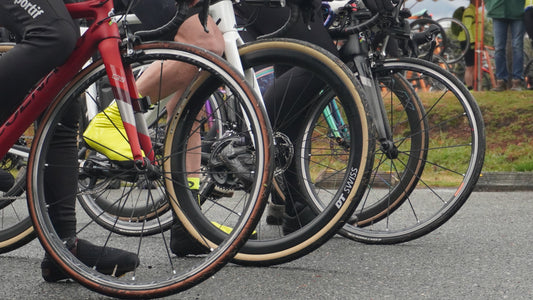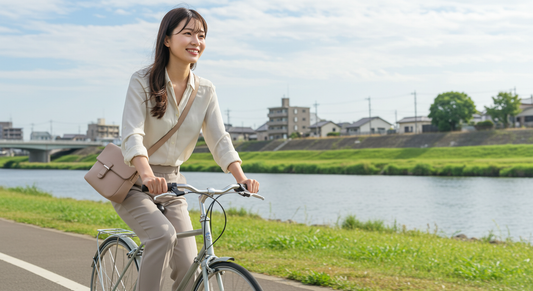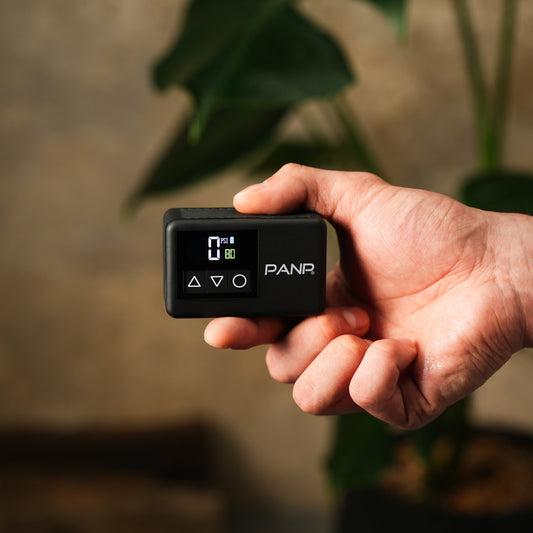- Introduction
- Bicycle maintenance basics
- Basics of air pumps and how to choose them
- How to prevent and repair a flat tire
- Regular Maintenance Checklist
- Seasonal maintenance
- Popular bicycle maintenance tools
- Frequently asked questions and solutions
- Summary and next steps
- Introducing PANP RIDE
- Related Articles
Introduction
For all of you who love cycling, do you maintain your bike?
Regular maintenance is extremely important for keeping your bicycle safe and enjoyable. In this article, we'll introduce some easy bicycle maintenance methods that even beginners can do. By reading this article, you can extend the life of your bicycle and prevent breakdowns before they occur.
The target readers are people who use bicycles on a daily basis, especially beginners who are interested in bicycle maintenance. The content will be useful for anyone who uses any type of bicycle, including mamachari (mother's bicycles), city bikes, and sports bikes.
Bicycle maintenance basics
The importance of bicycle maintenance
Regular maintenance of your bicycle will enable you to use it comfortably for a long period of time. Neglecting proper maintenance can cause parts to deteriorate or break down, and in the worst case scenario, it could lead to an accident.
Therefore, maintenance is extremely important as basic knowledge to extend the life of your car.
Easy maintenance even for beginners
Maintenance that even beginners can easily do is check tire pressure, check brakes, and clean and oil the chain. By performing these basic maintenance tasks, you can maintain the performance of your bike and continue riding safely.
Below we will explain the specific methods in detail.
Basics of air pumps and how to choose them

Manual vs. Electric Pump
There are two types of bicycle pumps: manual and electric. Understand the advantages and disadvantages of each and choose the pump that's right for you. Manual pumps are inexpensive and easy to carry, but require strength to use. Electric pumps are easy to use and don't require much force, but are more expensive and require charging.
Recommended electric air pumps
When choosing an electric tire pump, compare its features and consider the key points to consider when making your selection. For example, lightweight and compact models are easy to carry, and those with an automatic shut-off function are easy to use. Recommended electric tire pumps include PANP RIDE products. These products have a reputation for being high-performance and easy to use.
| Product name | price | function | size |
|---|---|---|---|
| PANP MINI | ¥ 7,980 | Looking for something compact and easy to carry on a bicycle? 25 liters per minute |
190*40*40mm 405g |
| PANP RIDE | ¥7,980 | Easy everyday use such as cars and balls 29 liters per minute |
153*60*39mm 433g |
| PANP RIDE PRO | ¥9980 | Powerful and fast inflation for cars, motorcycles, etc. 35 liters per minute |
130*112*56mm 650g |
The right pump for each type of bicycle
The appropriate pump will vary depending on the type of bicycle. For example, an easy-to-use manual pump is suitable for a mamachari (a Japanese bicycle), while a high-performance electric pump is suitable for a city bicycle or sports bike. Choosing the right pump for your bicycle will make maintenance easier.
How to prevent and repair a flat tire
Causes of punctures and how to prevent them
Tire punctures are an unavoidable problem when riding a bicycle. The main causes of punctures are foreign objects getting stuck in the tire, tire wear, and insufficient air pressure. Regularly checking the condition of your tires and maintaining the correct air pressure can reduce the risk of a puncture.
How to use a puncture repair kit
If you do get a puncture, you'll need a puncture repair kit to fix it yourself, which includes a patch, glue, tire levers, and an air pump.
Here are the basic steps to repair a puncture: First, remove any debris from the tire, then apply a patch to the tube, then inflate the tire to complete the repair. Using an electric pump makes the repair even easier.
Regular Maintenance Checklist
1. How to check your tires
Checking tire pressure
Check your tire pressure : The correct tire pressure is indicated on the side of your tire (usually in PSI or bars). Press down on the tire with your hand to make sure it's firm enough. If your tire is underinflated, it will feel sluggish and you'll be at a higher risk of a flat tire.
Use a tire pressure gauge : For the most accurate reading, use a tire pressure gauge to measure your tire pressure. Maintaining the correct tire pressure will ensure a smooth ride and extend the life of your tires.
Check tire wear
Check the tire grooves : Tires have grooves, and if these grooves are worn down and shallow, it is a sign that the tire is getting worn. Especially on road bikes, tire wear makes the bike more likely to slip, so it is important to replace the tire sooner.
Check for flat spots : If the tire's contact patch is flat or thin in places, it is worn out and should be replaced.
Check for small cracks and scratches : Check your tires for small cracks and scratches. Deterioration of the rubber increases the risk of a flat tire while driving. If you find any cracks, your tires need to be replaced.
Check for foreign objects
Check for foreign objects : Check to see if there are any small stones, pieces of glass, or other foreign objects stuck in the tire. Continuing to drive with a foreign object remaining in the tire can cause a puncture. If a foreign object is found, carefully remove it and repair the puncture if necessary.2. How to inspect your wheels
Check for wheel distortion
Wheel rotation check : Lift the bike and spin the tire to see if the wheel is wobbling from side to side. If the wheel is not straight, the rim may be warped.
Brake pad clearance : If you have rim brakes, make sure the wheel is not touching the brake pads as it rotates. If it is, it's likely that the wheel is warped or that a spoke is loose.
Spoke inspection
Check spoke tension : Spokes are important for maintaining the shape and strength of the wheel. Gently flick the spokes with your fingers to check for proper tension. If any spokes are loose, the wheel's strength has been weakened and the loose spokes need to be tightened.
Check for broken spokes : Check for broken or badly bent spokes. Damaged spokes affect the overall balance of the wheel and need to be replaced immediately.
Rim inspection
Check for rim wear : If you use rim brakes, the side of the rim may wear out. If the rim is worn out, braking performance will decrease and there is a risk of the rim breaking. If the rim shows signs of wear (such as lost grooves), it is time to consider replacing it.
Check the rim for scratches or dents : Large scratches or dents on the rim can throw off the overall balance of the wheel and negatively affect braking performance. If there is any significant damage, consider replacing the rim.
3. Check the rotation of the tires and wheels
Check that the wheel rotates smoothly : Turn the wheel by hand to make sure it rotates smoothly. If it does not rotate smoothly, there may be a problem with the hub. This is often caused by worn or dirty bearings, and if necessary, you will need to disassemble and clean the hub and replace the bearings.Check for abnormal noises : When you spin the wheel, check for abnormal noises. Clicking or grinding noises may indicate a problem with the bearings or hub.
4. Daily tire and wheel maintenance
Check your tire pressure regularly : Check your tire pressure at least once a week to ensure it is properly inflated. Underinflated tires increase the risk of a flat, while overinflated tires can cause damage.Clean your wheels : Mud and dirt can easily accumulate on the rims and spokes, so cleaning them regularly will improve braking performance and extend the life of your wheels.
5. Truing the wheels (if necessary)
If your wheel is badly out of tune, you'll need to truing it. This can be done by using a spoke wrench to tighten any loose spokes or loosen any that are too tight. This is a job that requires specialized skills, so if you're not confident, we recommend taking it to a bike shop.
1. Basic brake check methods
Checking the brake pads
Check for wear : Check that the brake pads are not worn. Pads have grooves, but if the grooves are almost gone, they need to be replaced.
Check the position : Make sure the brake pads are in good contact with the rim. It is important that the pads are in contact with the center of the rim. If the pads are touching the top of the rim or the tire, braking power will be reduced and the tire may be damaged.
Checking the brake lever
Check the brake lever pull : Make sure it is comfortable and has a firm grip when you pull it. If the lever is too close to the handlebar, the brake cable may be loose.
Check the return : When you release the lever, make sure it returns smoothly to its original position. If it returns slowly or keeps pulling, there may be a problem with the cable or spring.
Checking the brake cable
Check the tension : Make sure the brake cable is properly tensioned. If it's too loose, your brakes won't work well, and if it's too tight, it'll be difficult to pull.Check for damage : Check the cable for rust or fraying. If there are any abnormalities, it will need to be replaced.
2. How to adjust the brakes
Brake pad position adjustment
Loosen the fixing screws : Use a hex wrench to loosen the fixing screws that hold the brake pads in place.
Alignment : Adjust the pads so they are properly centered on the rim, but not touching the tire.
Tighten the screws : Once you have it in place, tighten the screws securely.
Cable tension adjustment
Adjusting the adjustment bolt : Turn the adjustment bolt near the brake lever to fine-tune the cable tension. If the pull feels weak, turn the bolt to tighten the cable a little.
Cable length adjustment : If a large amount of tension is needed, loosen the cable fixing screw near the brake caliper, pull the cable to adjust the tension, then retighten the screw.
Brake caliper left/right balance adjustment
Check balance : When you apply the brakes, make sure that both brake pads are evenly contacting the rim. If one side touches the rim first, the bike may be out of balance.
Using the adjustment screw : Use the adjustment screw on the brake caliper to adjust the pads so that they contact each other evenly.
Brake travel adjustment
You can adjust how much force is required to apply the brakes when you pull the brake lever. By turning the adjustment bolt, you can adjust the amount of force required to apply the brakes more quickly or more slowly.3. Other maintenance
Lubricate : Apply a generous amount of lubricant to the brake cables and moving parts of the brakes to keep them moving smoothly and prevent rust and stiffness.Remove rust and dirt : If dirt accumulates on the rims or brake pads, braking performance may be reduced, so clean them regularly.
Seasonal maintenance
Spring and summer maintenance
Spring and summer are the seasons when bicycles are used most frequently. During these times, it's important to be sure to check the condition and air pressure of your tires. Also, because the sun is so strong, we recommend using a bicycle cover to prevent deterioration of the frame and parts.
Autumn and winter maintenance
In autumn and winter, temperatures drop and road conditions change, requiring special maintenance. First, to ensure tire grip, check tire tread depth and replace tires if necessary. Braking effectiveness is also important, so regularly check and adjust the condition of brake pads. Furthermore, use anti-rust spray to prevent rust on parts that are prone to rust.
Popular bicycle maintenance tools
Introducing recommended tools
Here are some items that are useful tools for bicycle maintenance. First, electric pumps are extremely convenient because they allow you to easily inflate your bike. There are many lightweight and compact models available, as well as inexpensive, high-performance models. Also, having a bicycle-specific tool kit will make maintenance at home easier. Having these tools will greatly improve the efficiency of your maintenance.
Frequently asked questions and solutions
A section to answer questions from beginners
A common question from beginners is, "Can I use an electric air pump if my mamachari bike gets a flat tire?" The answer is "Yes." Electric air pumps are compatible with most bikes, but it's important to check the compatible valve type. Another common question is, "Are there any electric air pumps suitable for city bikes?" Again, many electric air pumps are compatible with city bikes, so they can be used without any problems.
summary
Recommendations for practice
In this article, we've introduced a wide range of topics, from basic bicycle maintenance methods to choosing the right tools. By performing these maintenance tasks regularly, you can extend the life of your bike and make it more comfortable to use. The next step is to actually start maintaining your bike. If you're a beginner, it's best to start with some simple maintenance.
Introducing PANP RIDE
PANP RIDE Products and Services
The PANP series offers a variety of products and services useful for bicycle maintenance. Their electric pumps, in particular, are renowned for their high performance and ease of use. They also offer regular maintenance services and sell parts. These services make bicycle maintenance even easier.
#AirPump #ElectricAirPump #BicycleMaintenance #MamaChari #CityBike #FlatTire #PANP RIDE




